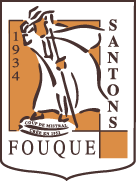The Evening Vigil
The Provençal tradition of the Vigil Eve (24 December in the evening)
In a family of santonniers, the Vigil Eve is an integral part of the private life and professional life. The Fouque family scrupulously respects the tradition by making the Vigil Eve on the evening of December 24th.
In Provence, many traditions are linked to atmospheric conditions, like "cacho-fio": on Christmas Eve, the oldest person and the youngest child of the assembly both take the log , necessarily from a fruit tree died in the year, in the fireplace where the ancestor will water three times cooked wine before lighting it by pronouncing these words in Provençal :
- Alegre ! (Allégresse!)
- Dieu nous alegre ! (God gives us joy!)
- Cacho-fio ven (Cacho-fio comes)
- Tout ven ben ! (Everything is fine!)
- De veire l'an que ven (See the coming year)
- Se sian pas mai (If we are not over)
- Siéguen pas men (Let's not be less)
Then, all the family and friends eat the "Big Supper". The table will be erected in the middle of the room from which one can see, on one side the chimney and, on the other, the crib. On the table, three tablecloths will be laid on which are the most beautiful service of the house, three candlesticks of a single candle will be lit. The decoration is made with the cups containing sprouted wheat from the Sainte-Barbe, surrounded by a ribbon (red and yellow preferably, the colors of Provence). Then, the hostess cuts the ends that will be called hay and they will be placed in the manger of the nursery by the children.
In addition, pine branches and small holly (very fine wild holly) will be placed between each plate.
The big dinner is a lean meal. It often starts with a "Bagno Caoudo". It is an anchovy vinaigrette sauce that is heated just before serving with raw celery. It is finally the turn of the traditional card, then fish, generally desalted cod and finally the cheeses of the country. This meal will include seven courses.
Then everyone attends midnight mass and the living nativity scene in all the churches in our area.
Back home, everyone knows at least a song, a passage of the pastoral or a little verse in the language of Mistral which he will benefit others. Everyone wears the "costume" (which is not a disguise), but a dress that was already worn in the 18th century in Aix-en-Provence (the Santons Fouque are dressed at the same time).
Once the table is cleared, it will be embellished again to receive the cooked wine and thirteen desserts: raisins, almonds, dried figs filled with nuts, which is called the nougat of the poor. Dates that are served in the most beautiful dish, apples, tangerines, pears, black nougat or white nougat, quince pasta and especially the pump with olive oil, papillotes that are replaced at Aix-en-Provence by calissons.
This text may be reproduced with the proviso of affixing the words: Text Mireille Fouque - Aix-en-Provence.
